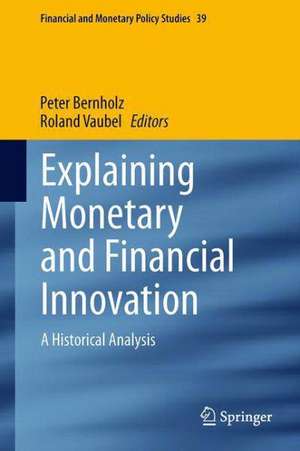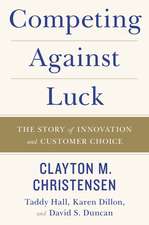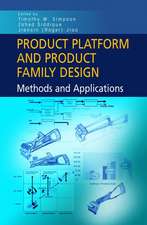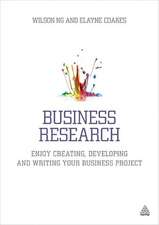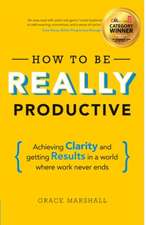Explaining Monetary and Financial Innovation: A Historical Analysis: Financial and Monetary Policy Studies, cartea 39
Editat de Peter Bernholz, Roland Vaubelen Limba Engleză Hardback – 9 iul 2014
| Toate formatele și edițiile | Preț | Express |
|---|---|---|
| Paperback (1) | 948.29 lei 6-8 săpt. | |
| Springer International Publishing – 17 sep 2016 | 948.29 lei 6-8 săpt. | |
| Hardback (1) | 954.45 lei 6-8 săpt. | |
| Springer International Publishing – 9 iul 2014 | 954.45 lei 6-8 săpt. |
Din seria Financial and Monetary Policy Studies
-
 Preț: 544.10 lei
Preț: 544.10 lei - 15%
 Preț: 644.49 lei
Preț: 644.49 lei -
 Preț: 391.40 lei
Preț: 391.40 lei - 18%
 Preț: 954.45 lei
Preț: 954.45 lei - 18%
 Preț: 949.42 lei
Preț: 949.42 lei -
 Preț: 395.47 lei
Preț: 395.47 lei -
 Preț: 391.40 lei
Preț: 391.40 lei -
 Preț: 386.00 lei
Preț: 386.00 lei -
 Preț: 394.87 lei
Preț: 394.87 lei - 15%
 Preț: 640.71 lei
Preț: 640.71 lei - 15%
 Preț: 639.25 lei
Preț: 639.25 lei - 15%
 Preț: 651.02 lei
Preț: 651.02 lei - 18%
 Preț: 946.10 lei
Preț: 946.10 lei - 18%
 Preț: 1394.03 lei
Preț: 1394.03 lei -
 Preț: 385.47 lei
Preț: 385.47 lei -
 Preț: 383.71 lei
Preț: 383.71 lei - 15%
 Preț: 643.84 lei
Preț: 643.84 lei - 18%
 Preț: 958.07 lei
Preț: 958.07 lei - 15%
 Preț: 649.54 lei
Preț: 649.54 lei - 18%
 Preț: 1233.69 lei
Preț: 1233.69 lei -
 Preț: 391.61 lei
Preț: 391.61 lei - 18%
 Preț: 939.42 lei
Preț: 939.42 lei - 15%
 Preț: 639.90 lei
Preț: 639.90 lei - 18%
 Preț: 955.88 lei
Preț: 955.88 lei - 18%
 Preț: 954.77 lei
Preț: 954.77 lei - 18%
 Preț: 948.79 lei
Preț: 948.79 lei - 15%
 Preț: 634.00 lei
Preț: 634.00 lei - 15%
 Preț: 637.78 lei
Preț: 637.78 lei - 15%
 Preț: 647.92 lei
Preț: 647.92 lei - 15%
 Preț: 640.88 lei
Preț: 640.88 lei
Preț: 954.45 lei
Preț vechi: 1163.97 lei
-18% Nou
Puncte Express: 1432
Preț estimativ în valută:
182.64€ • 192.05$ • 150.91£
182.64€ • 192.05$ • 150.91£
Carte tipărită la comandă
Livrare economică 16-30 aprilie
Preluare comenzi: 021 569.72.76
Specificații
ISBN-13: 9783319061085
ISBN-10: 3319061089
Pagini: 376
Ilustrații: X, 366 p. 63 illus.
Dimensiuni: 155 x 235 x 26 mm
Greutate: 0.7 kg
Ediția:2014
Editura: Springer International Publishing
Colecția Springer
Seria Financial and Monetary Policy Studies
Locul publicării:Cham, Switzerland
ISBN-10: 3319061089
Pagini: 376
Ilustrații: X, 366 p. 63 illus.
Dimensiuni: 155 x 235 x 26 mm
Greutate: 0.7 kg
Ediția:2014
Editura: Springer International Publishing
Colecția Springer
Seria Financial and Monetary Policy Studies
Locul publicării:Cham, Switzerland
Public țintă
ResearchCuprins
The Political Economy of Monetary and Financial Innovation by P. Bernholz and R. Vaubel.- Silver as a Financial Tool in Ancient Egypt and Mesopotamia by M. Van De Mieroop.- War and Peace, Imitation and Innovation, Backwardness and Development by D.M. Schaps.- The Emergence and Spread of Coins in Ancient India by D.R. Reddy.- The Emergence and Spread of Coins in China from the Spring and Autumn Period to the Warring States Period by Y. Kakinuma.- The Changing Pattern of Achaemenid Persian Royal Coinage by C. Tuplin.- The Spread of Coins in the Hellenistic World by A. Meadows.-Monetary Innovation in Ancient Rome by B.E. WOYTEK.- The Provision of Stable Moneys by Florence and Venice, and North Italian Financial Innovations in the Renaissance Period by P. Spufford.- Monetary and Financial Innovations in Flanders, Antwerp, London and Hamburg by M. A. Denzel.- The Bank of Amsterdam Through the Lens of Monetary Competition by S. QUINN, W. Roberds.- Monetary and Financial Innovation in the Spanish Empire by C. Alvarez-Nogal.- The Emergence and Innovations of the Eurodollar Money and Bond Market by T. Saadma, R. Vaubel.
Notă biografică
Peter Bernholz is Assistant Professor at University of Frankfurt 1964 - 66 and was Ordinarius (Full Professor) at the Technische Universitaet Berlin from 1966 to 1971. 1971-1997 Ordinarius for Economics, especially for Economic Policy and for Monetary and International Economics, and Institute Director at University of Basel, Switzerland. Dean of the Faculty of Philosophy and History 1982 - 83. Several offers of chairs from the universities of Mannheim, Bonn and Kiel. Since retirement asked to offer several courses on the European Monetary and Economic Union at the Institute for European Global Studies, Basel, until 2008. Guest professorships at Massachusetts Institute of Technology 1969, Virginia Polytechnic Institute 1974 and 1978, Institute for Advanced Studies, Vienna, 1980, Stanford University 1981, University of California Los Angeles 1986/87, Australian National University, Canberra, 1993, University of California Irvine 1998, Universita degli Studi di Roma “La Sapienza” 2000, Universitaet Innsbruck 2002. Research Fellow of the Center for Study of Public Choice, George Mason University, Fairfax, Virginia.
Roland Vaubel is Professor of Economics at the University of Mannheim, Germany. He has received a B.A. in Philosophy, Politics and Economics from the University of Oxford, an M.A. from Columbia University, New York, and a doctorate from the University of Kiel, Germany. He has been Professor of Economics at Erasmus University Rotterdam and Visiting Professor of International Economics at the University of Chicago (Graduate School of Business). He is a member of the Advisory Council to the German Federal Ministry of Economics and Technology. He is associate editor of the Review of International Organizations and a member of the editorial boards of the European Journal of Political Economy, Constitutional Political Economy and Cato Journal. He is also a member of the Academic Advisory Council of the Institute of EconomicAffairs, London.
Roland Vaubel is Professor of Economics at the University of Mannheim, Germany. He has received a B.A. in Philosophy, Politics and Economics from the University of Oxford, an M.A. from Columbia University, New York, and a doctorate from the University of Kiel, Germany. He has been Professor of Economics at Erasmus University Rotterdam and Visiting Professor of International Economics at the University of Chicago (Graduate School of Business). He is a member of the Advisory Council to the German Federal Ministry of Economics and Technology. He is associate editor of the Review of International Organizations and a member of the editorial boards of the European Journal of Political Economy, Constitutional Political Economy and Cato Journal. He is also a member of the Academic Advisory Council of the Institute of EconomicAffairs, London.
Textul de pe ultima copertă
This book discusses theories of monetary and financial innovation and applies them to key monetary and financial innovations in history – starting with the use of silver bars in Mesopotamia and ending with the emergence of the Eurodollar market in London. The key monetary innovations are coinage (Asia minor, China, India), the payment of interest on loans, the bill of exchange and deposit banking (Venice, Antwerp, Amsterdam, London). The main financial innovation is the emergence of bond markets (also starting in Venice). Episodes of innovation are contrasted with relatively stagnant environments (the Persian Empire, the Roman Empire, the Spanish Empire). The comparisons suggest that small, open and competing jurisdictions have been more innovative than large empires – as has been suggested by David Hume in 1742.
Caracteristici
Presents an overview of the most important key financial innovations in history Illustrates why, historically, almost all important monetary innovations emerged in small, open and competing states Explains how money emerged and evolved with special analysis of the most important junctions in monetary history Includes supplementary material: sn.pub/extras
